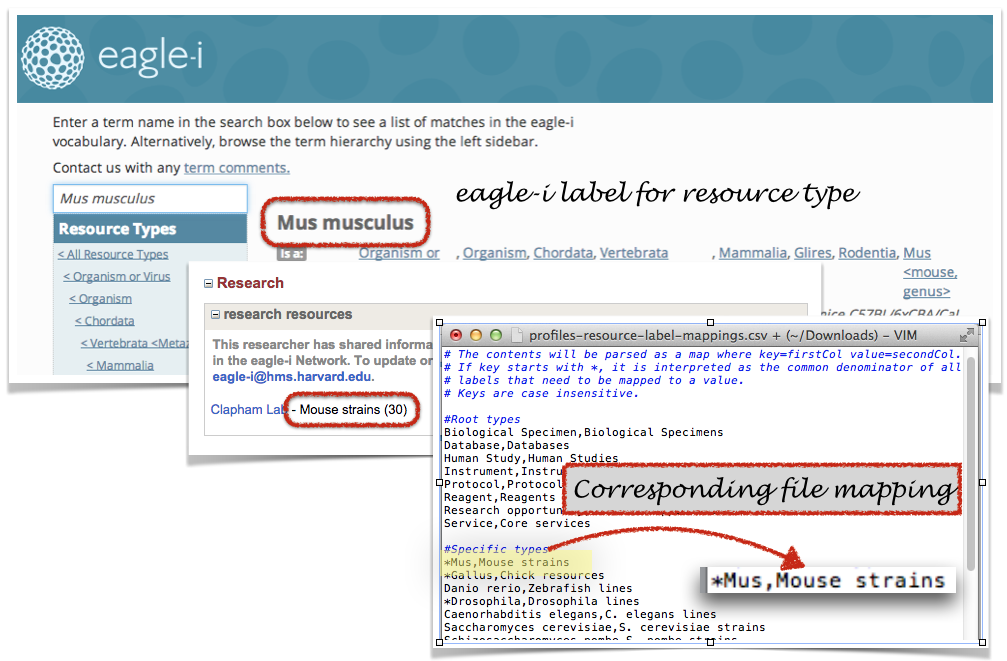Integrating eagle-i resources into Profiles application:
- SWEET application is required
- Profiles URIs need to be added to all Person records in eagle-i
- Profiles URIs need to be added to all Person records in eagle-i
- Define the base URL for Profiles
- In the eagle-i-apps.properties, add a new property
eaglei.datatools.profilesBase - The expected value of this property is a URL
- The default value of this property is
http://connects.catalyst.harvard.edu/profiles/profile/person/
- In the eagle-i-apps.properties, add a new property
- In order to display resource types in a user friendly and compact format, a csv file is required. Create a csv file that maps the name of the resource type as defined by the eagle-i ontology and the desired display name
- The expected name of the file is
profiles-resource-label-mappings.csv - The expected location of the file is in the same directory as the eagle-i-apps.properties file, in other words, the eagle-i config directory.
- The expected format of the file is:
- lines that start with '
#' and blank lines are ignored - each line is one mapping
each mapping is in the form of
key,value. These are case sensitive.- keys starting with
*indicate a partial match and are meant to cover several eagle-i terms that share a common part. For example, *Mus means that both Mus and Mus Musculus will be mapped.
- lines that start with '
- Sample file: profiles-resource-label-mappings.csv
- For the mapping
*Mus,Mouse strains:
- The expected name of the file is
- Set up an external process which accesses the eagle-i profiles web service and writes the response to a location. This process should be recurring to get updated information.
- The web service is located at [your eagle-i installation]/sweet/profiles.
- For example, Harvard's eagle-i profiles web service is located at http://harvard.eagle-I.net/sweet/profiles
- Configure Profiles application to access this resource dump (following Profiles instructions)
Overview
Content Tools
